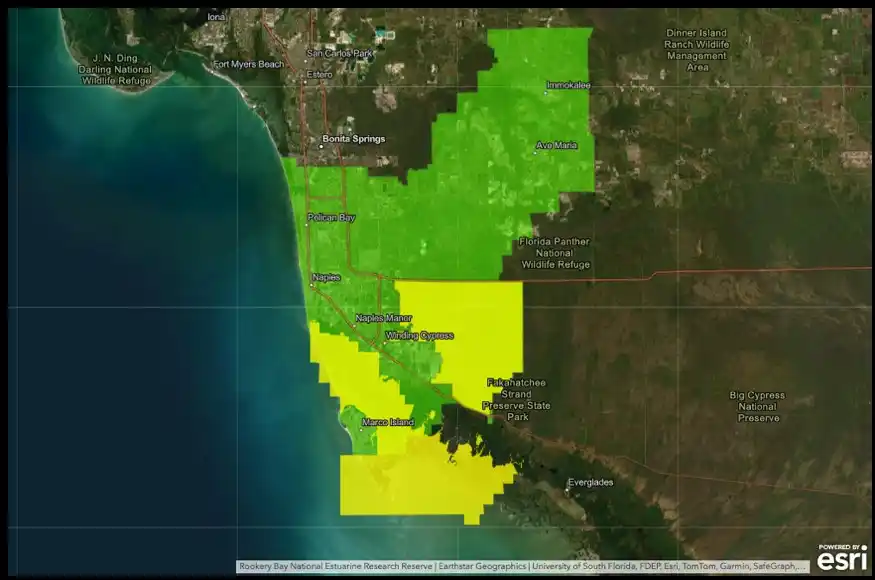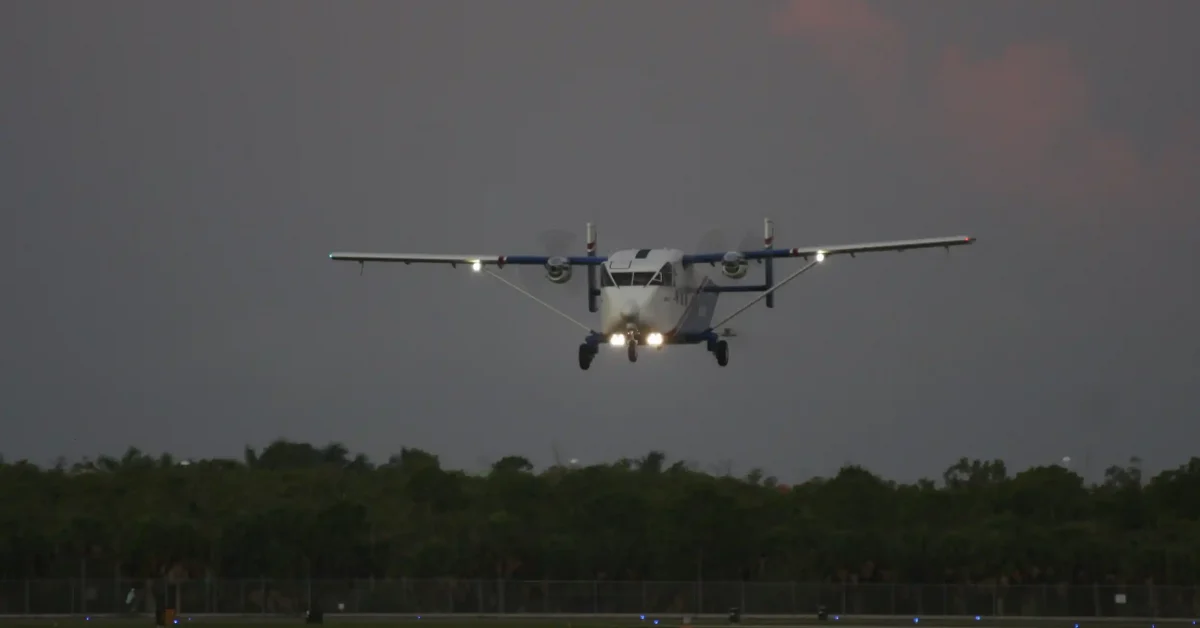As Collier County grows eastward, Collier Mosquito Control District is expanding its boundaries from 400 square miles to more than 700 square miles in its efforts to help keep the pesky insects’ population in check and lessen the threat of mosquito-borne illnesses.
The new boundaries went into effect Oct. 1 and encompass communities including Port of the Islands, Ave Maria, Naples Reserve and other recently developed areas east and north of Golden Gate Estates, according to a CMCD press release. Also included in the new boundaries are areas that are approved for development, according to CMCD, allowing residents in those areas to receive services as soon as they move into a new home.
A 2022 local referendum seeking expansion of the district passed by 71%, and it was subsequently approved in May of this year by both houses of the Florida Legislature. CMCD was created by the Legislature in 1950 and originally served just 6 square miles of downtown Naples; it is funded by Collier County ad valorem taxes.
During an Oct. 1 media briefing and tour of CMCD facilities, Executive Director Patrick Linn said the expansion will help with the district’s mosquito control efforts as part of its mission to protect the health and comfort of the community as it grows.
“The forecasted growth in Collier County is exceptional; we’re projected to go from right now where we’re just shy of 400,000 permanent residents to nearly a million residents by the time that we’re built out,” Linn said. “We wanted to get ahead of it a little bit, and the district is going to be encompassing these areas where the expected construction will take place.”
He said the new coverage area could ultimately contain upward of 30,000 homes.
“We want to be in those areas and have a good handle on the disease threat, the mosquitoes that are out there, the habitat, et cetera,” Linn said. “Then we can work with the community and be out in front of the mosquito problem that we’re going to have.”
Linn said the expansion comes at a good time, due to the amount of standing water that creates mosquito habitats after a summer of record-setting rainfall in Southwest Florida and the threat of diseases such as Dengue fever.
“We are seeing a lot of changes year-over-year in that the habitat is evolving, as well as the disease threat; we see in Florida now much more Dengue fever than we used to see,” Linn said. “We actually had — not in Collier, but we did in Florida last year — some malaria; that was very disconcerting. The public health threats are very real, and a lot of that has to do with the fact that the world is shrinking, that you can be virtually anywhere else on the planet within 24 hours, and we have most of those species of mosquitoes that can carry disease in our area.”
 World’s biggest bug-zapper at work
World’s biggest bug-zapper at work
In treating areas to control both larval and adult mosquitoes, Linn said the district employs a variety of technologies, including drones, in addition to airplanes and helicopters.
He said the newest drone, which looks like the world’s biggest bug-zapper, can be used to inspect and treat areas that are too tight to be reached by bigger aircraft. The district has a total of four drones of different sizes it can use in areas where power lines and other obstacles would hamper planes and helicopters, to treat larval mosquitoes and look for breeding habitat.
And while new technologies and equipment add to the arsenal used against mosquitoes, Linn described control efforts as a marathon, not a sprint.
“It is something that, as our science evolves, we’ll be able to exert a reasonable amount of control and a reasonable reduction in disease risk for our population — for our humans and pets and agricultural livestock,” Linn said. “But we are not mosquito annihilation, we’re mosquito control, and the idea is to control them to tolerable levels.”
A new threat to guard against
Linn said during the media briefing that Florida is seeing a “handful of cases” of Oropouche fever, a virus that he said is transmitted primarily by biting midges — commonly known as “no-see-ums” and with the scientific name Culicoides paraensis — but can also be transmitted by a mosquito species abundant in Southwest Florida, Culex quinquefasciatus. He said the cases reported so far in Florida have been travel-related and not transmitted in the state.
That could change, though, which is why he said CMCD is working quickly on a program to control them.
In a follow-up interview, CMCD Deputy Director Keira Lucas said the organization is working with the Florida Health Department and the Florida Department of Agriculture and Consumer Services on the best approach to fighting the new threat, which is also known as Sloth Fever. She said most of the 86 travel-related cases discovered in Florida so far have come in from Cuba.
Lucas said the species of biting midges/no-see-ums that spreads the virus is common in hardwood forests and there is “no evidence that really shows that the biting midges that come from our salt marshes — the ones that we’re most used to when we’re at the beach — can spread Oropouche.
“What we do know is that that we do have those [hardwood forest biting midges] here in Collier County, but not in as high abundance as the saltmarsh biting midges.”
She said while no cases of Oropouche fever have been reported in Collier County, CMCD has a disease response plan in place with the state health and agriculture departments and also with the local health department.
“If the health department does alert us that there is a [local] case, we’re able to respond immediately, whether it be trapping or reducing the population of biting midges in the area,” Lucas said.
This story was published in The Naples Press on Oct. 11





